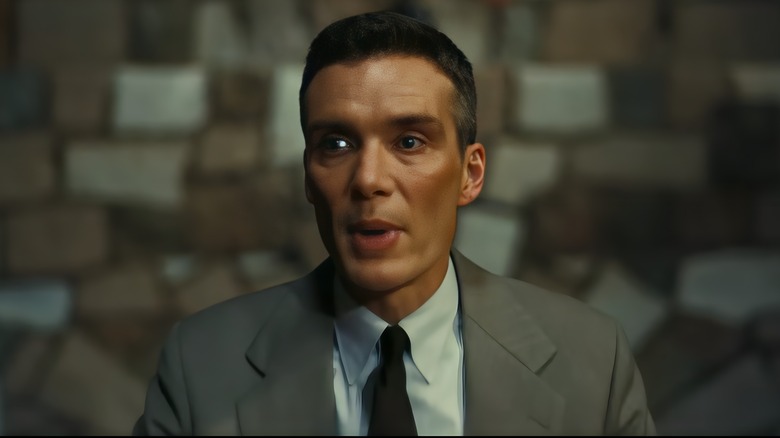Oppenheimer's Interrogation Scenes Are More Accurate Than You Likely Think
One of the most memorable parts of "Oppenheimer" is the hearings during which J. Robert Oppenheimer (Cillian Murphy) is put on what amounts to a trial or an interrogation in all but name of his past activities and associations. Viewers of the film may assume that some aspects of the hearings, such as Oppenheimer and his wife, Kitty (Emily Blunt), sitting only a few feet behind those who are revealing private details of his life, were orchestrated by director Christopher Nolan to enhance the scenes' dramatic effect, but according to the filmmaker himself, they're actually a pretty accurate reflection of what those hearings were like and one of the things "Oppenheimer" gets right about the true story.
"One of the things that was so striking about the real-life situation in which Oppenheimer found himself in these security hearings is they were conducted in a very shabby small space with a very peculiar intimacy," Nolan told Men's Health. "He was being interrogated about the most intimate details about his entire life, and the witnesses who would testify, he was sitting three feet behind them the entire time ... His wife was sitting right behind him as these most intimate details of his life were being unfolded and he was being split open for all to see."
Oppenheimer's U.S. government security clearance hearings form one of the key dramatic levers of the entire three-hour movie, taking what might at first seem like a simple bureaucratic matter and turning it into an intense moral examination, similar to the investigation that forms the spine of "Citizen Kane." And Nolan didn't want to shy away from the discomfort inherent in those hearings.
Nolan wanted to make the hearings as uncomfortable as they were in real life
One particularly striking shot in "Oppenheimer," that of the scientist appearing naked and in flagrante delicto with mistress Jean Tatlock (Florence Pugh) before the security council, is of course a visual device to show their lives being bared over the course of the proceedings and did not literally happen. But the actual, real-life security clearance hearings were set up pretty much as you see in the film, according to director Christopher Nolan.
And if you feel a sense of discomfort at the way the scenes are constructed, that's on purpose, too. "I really wanted to push hard in the direction of showing how uncomfortable that must have been and how strange that must have been for everyone involved," Nolan said. "The dialogue in that moment is from the transcripts. I didn't write it. It really is what was said there. It's a really shocking piece of history and I wanted to really bring that to life for people."
"Oppenheimer" utilizes many cinematic devices to put audiences inside the subjective perception of its protagonist, but some of those devices didn't need to be invented by the filmmakers, coming instead directly from the historical record.

